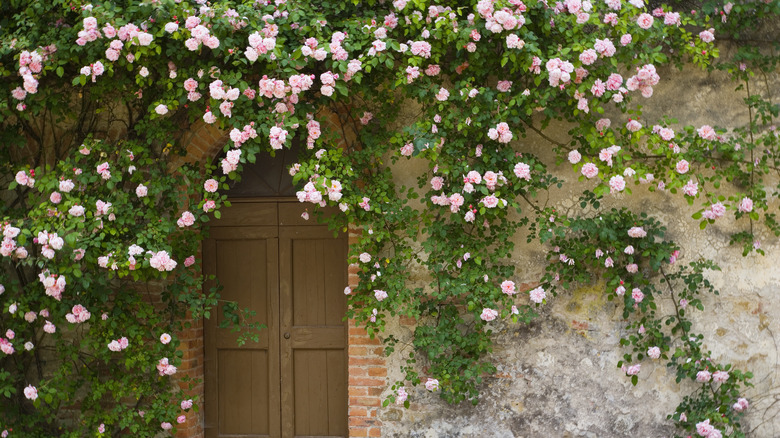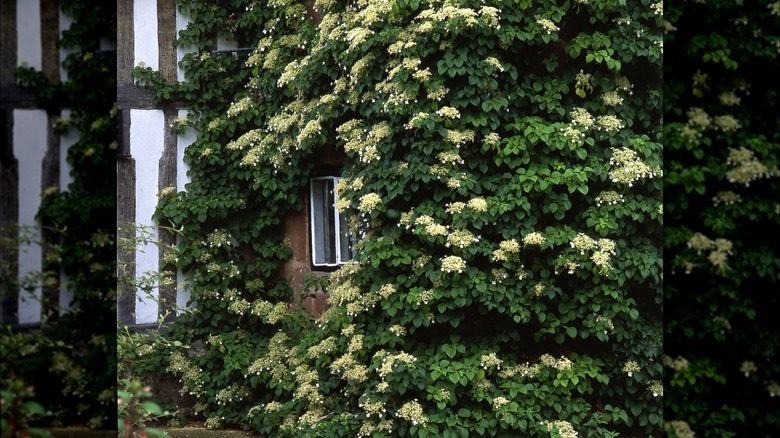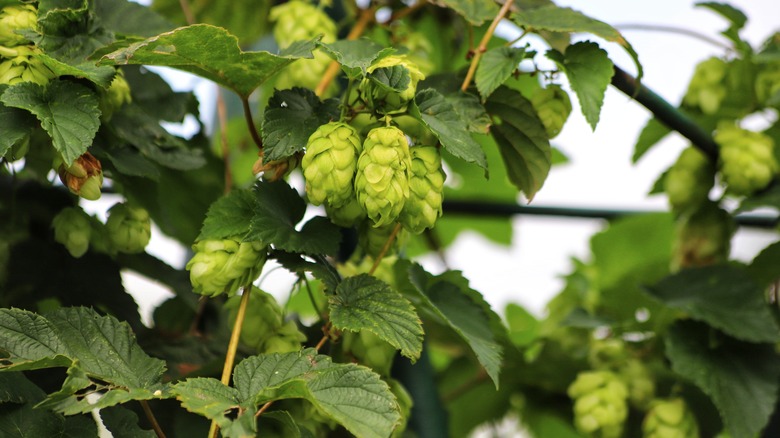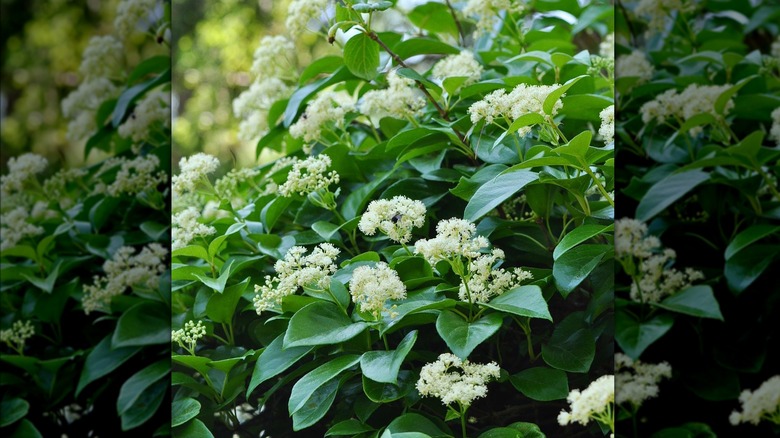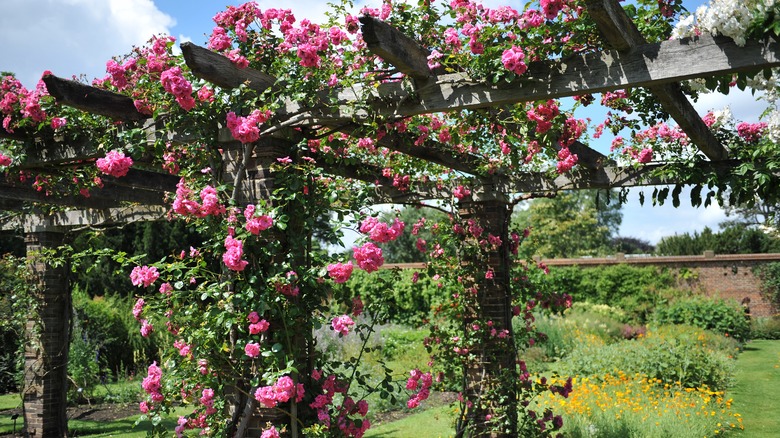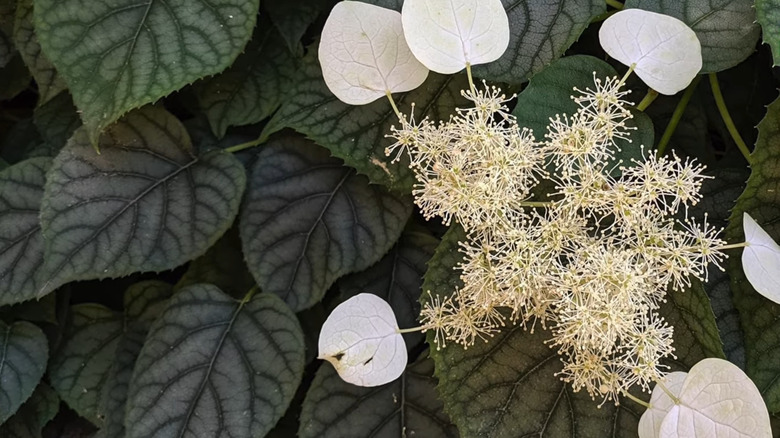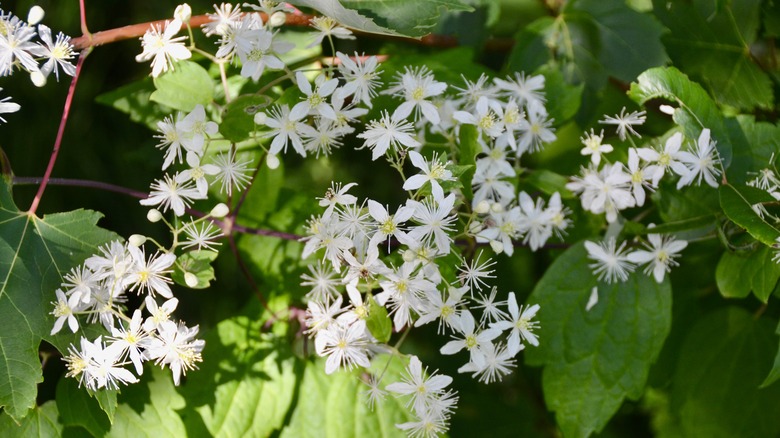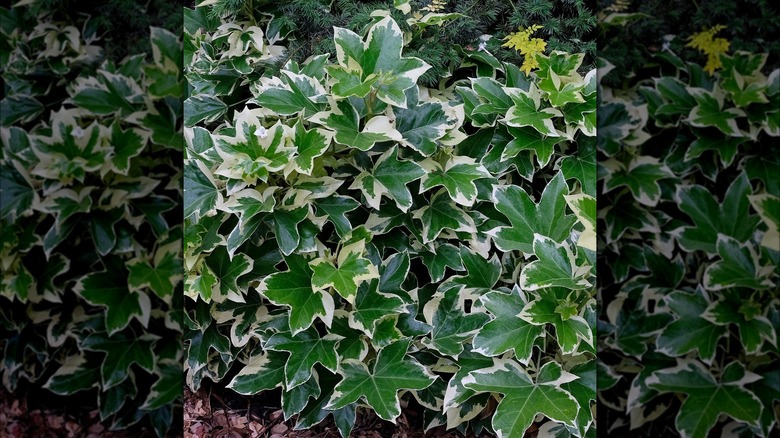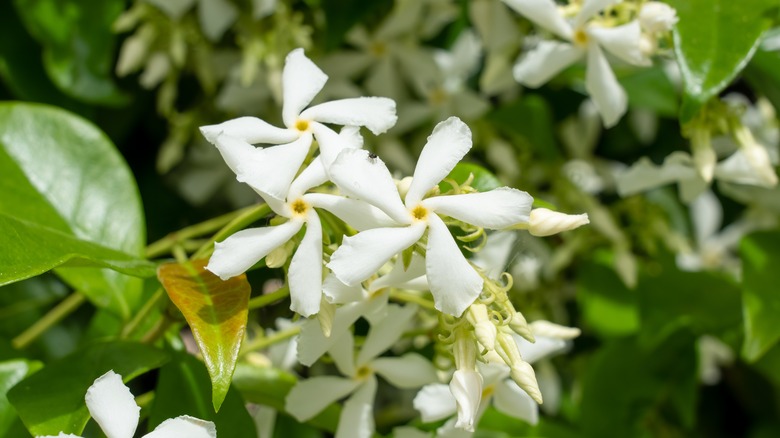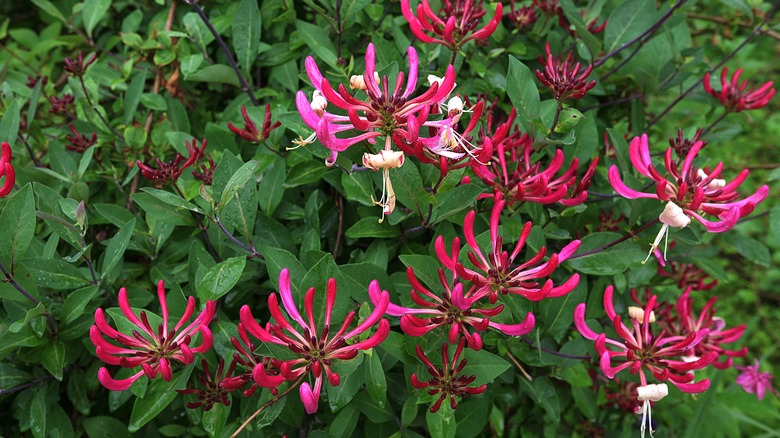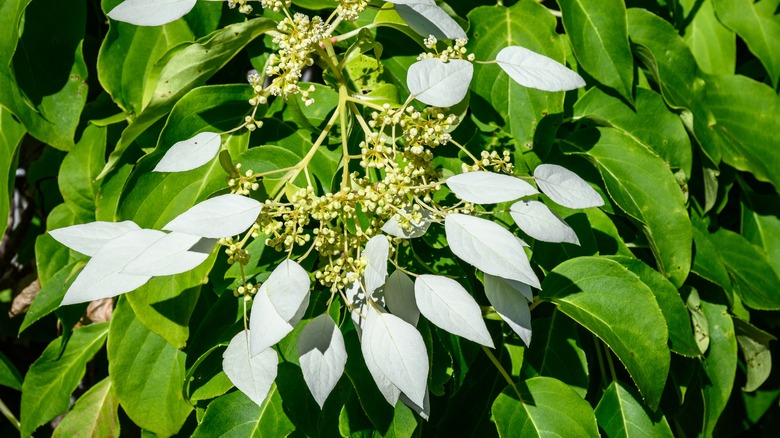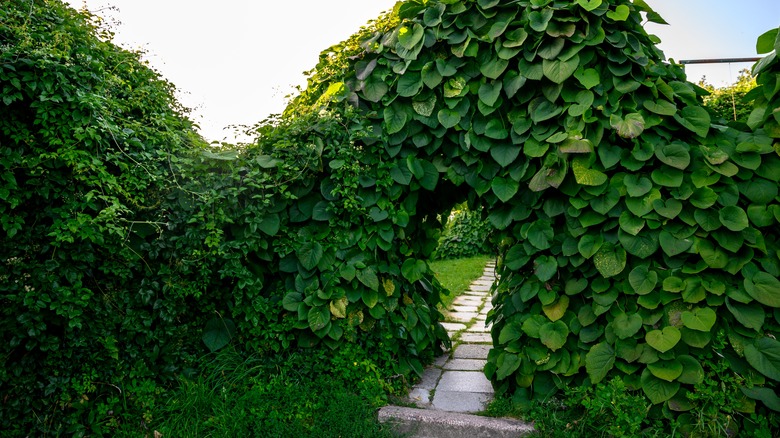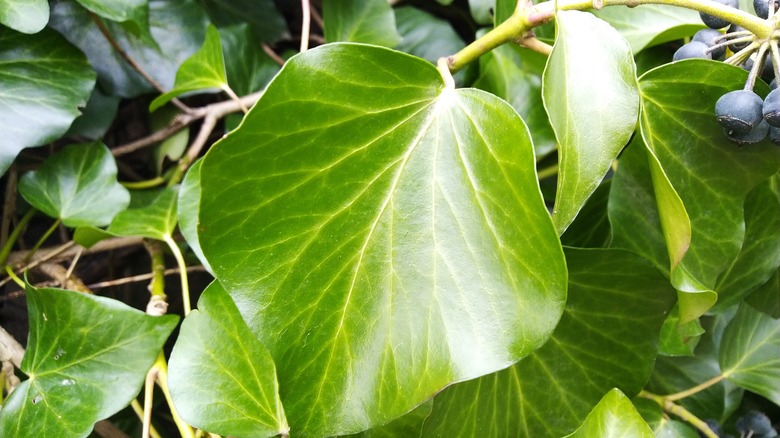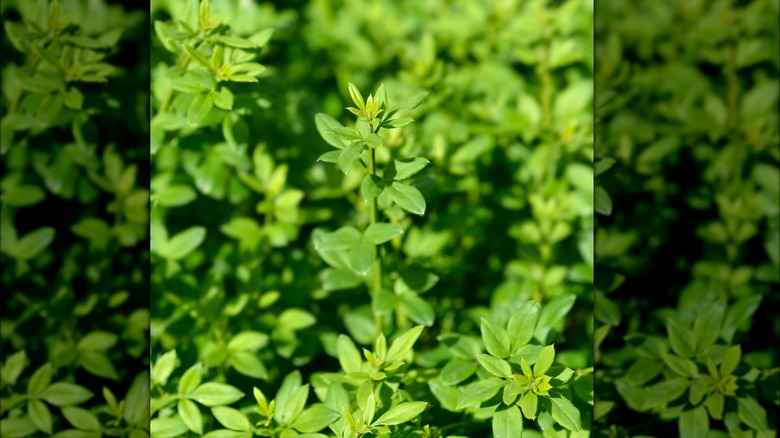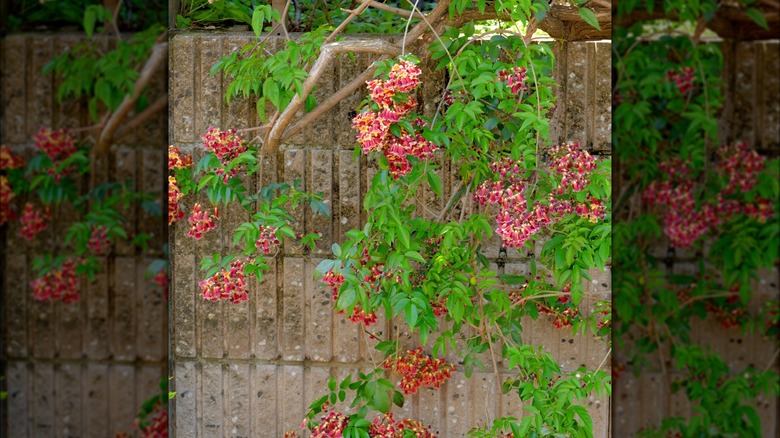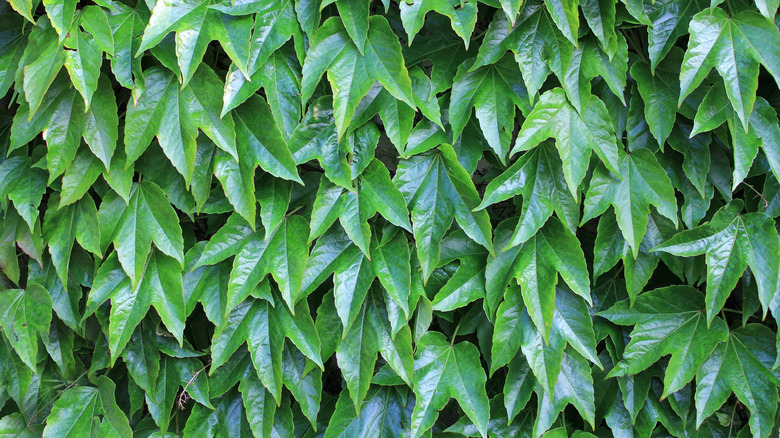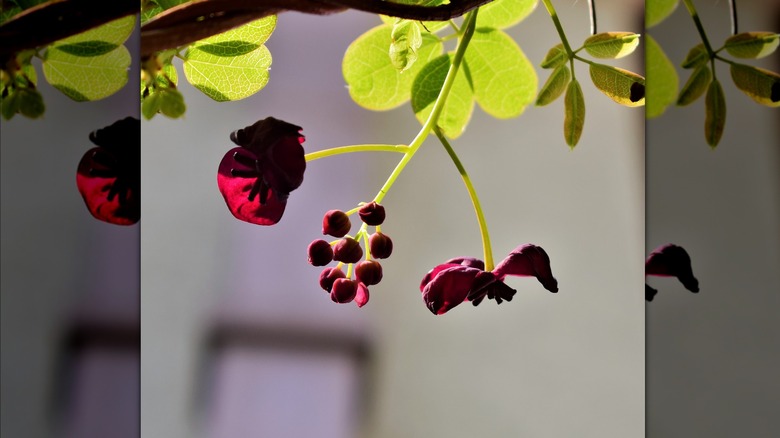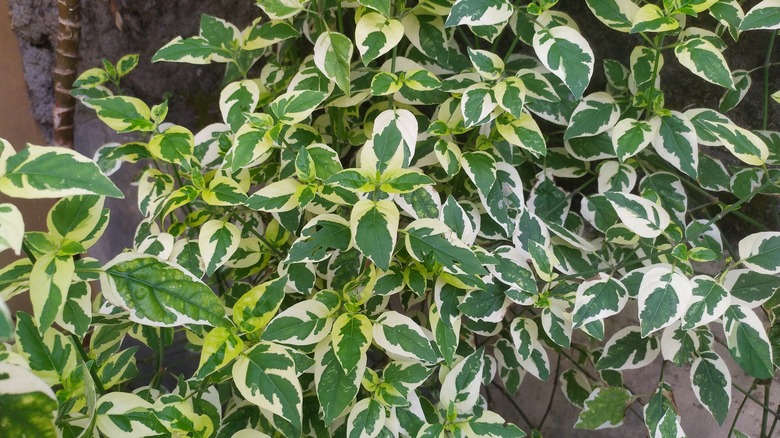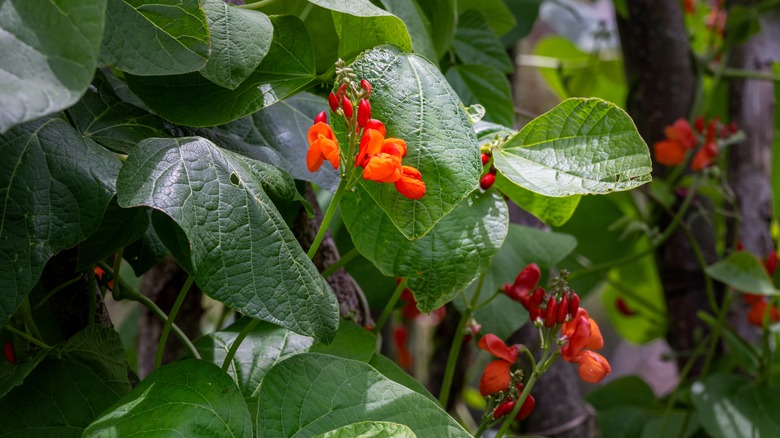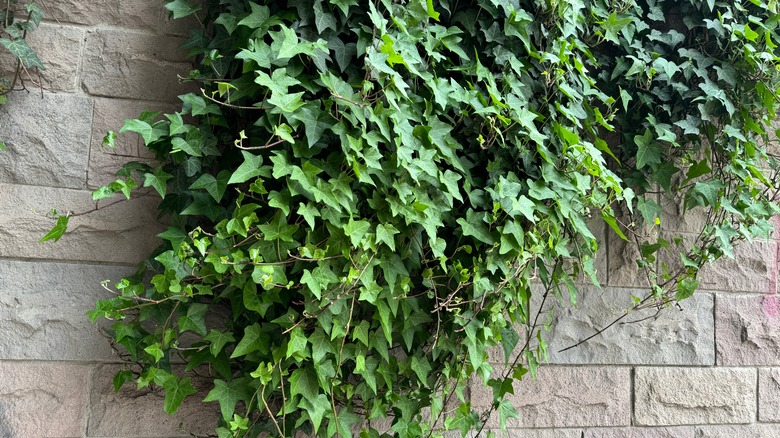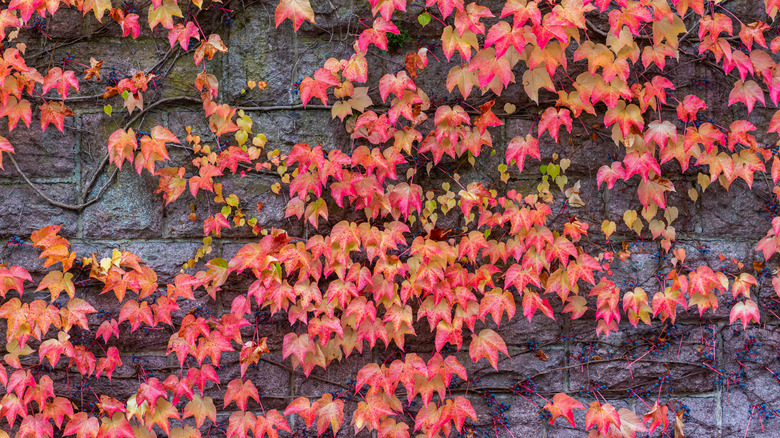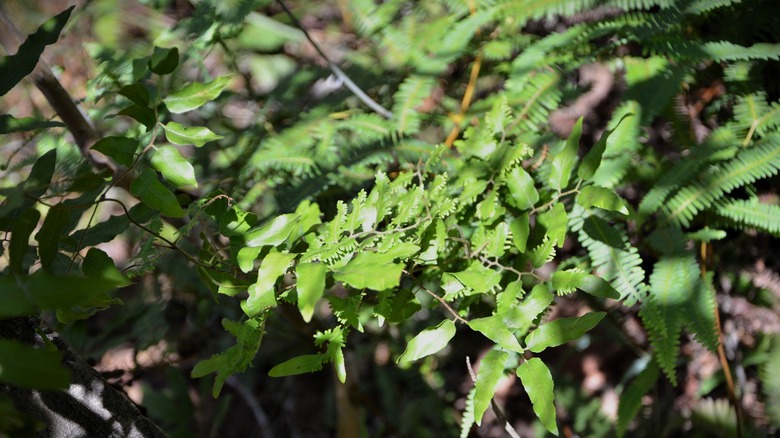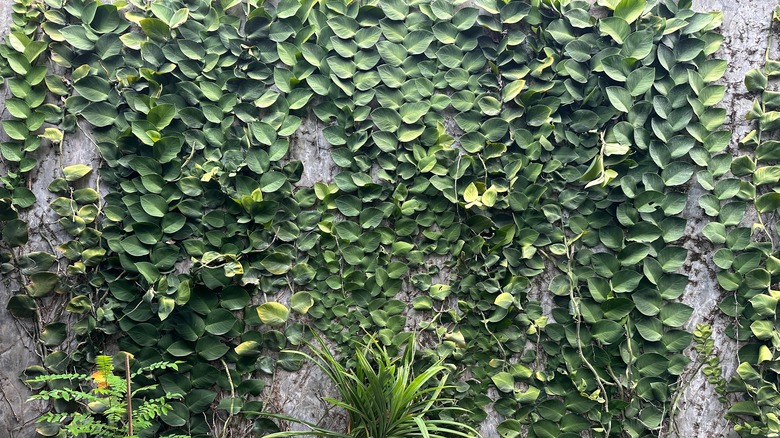15 Climbing Plants Perfect For Your North-Facing Wall (& 7 To Avoid)
Enlivening north-facing walls is a challenge. They receive little to no sunlight, particularly in winter, are generally saddled with dry soils, and are unbearably cold for most plants. Fortunately, the titanic diversity of the plant world ensures you're never out of options. You can easily find a plethora of shrubs that simply flatten themselves against the walls as they grow, no questions asked. Better yet, you can find myriad climbing plants that will happily knit their way on the brick or wood, blooming brilliant flowers, entrancing foliage, aiding insulation, or inviting birds and pollinators for a visit. Popular picks include climbing hydrangeas, virgin's bower, star jasmine, violet trumpet vine, and more, as we list below.
However, it's helpful to stay abreast of the planting choices that could bode poorly for your walls. For instance, voraciously growing vines like English ivy and Virginia creeper can slink in between cracks and gaps or establish themselves too deeply, becoming intensely damaging in the future. Similarly, certain climbers, such as chocolate vine and Japanese climbing fern — despite being the right fit — may have to be relinquished because they refuse to respect boundaries in certain states. Additionally, it's important to pay attention to the selected vine's growth habit. Clinging vines like crossvines have no business around wooden siding as their holdfasts become conduits for moisture, rotting it. Likewise, twining vines (think trumpet honeysuckle) demand ample training to ensure uniform coverage all over the walls. Knowing this, read on to learn your options.
1. Plant: Climbing hydrangea
Climbing hydrangea (Hydrangea anomala), this oriental, non-invasive native looks dreamy as it envelops shaded, north-facing walls in its aromatic white flowers and glossy, heart-shaped foliage through the summer — sans pests (generally). Its tendrils cling easily to the walls, building sculptural branch arrangements punctuated all the more by dry flower heads and peeling cinnamon bark in the winter. Climbing hydrangeas devote the initial five years to establishing roots in moist soils and pick the pace later to reach nearly 80 feet high. So, consider pruning them before the winter ends if containing their size is a priority.
2. Plant: Common hops
Selectively native across the US and Europe, the common hop (Humulus lupulus) is a 20-foot-tall (and 6-foot-wide) vine that adapts to shaded areas despite its love for sunlight. When adequately supported, they will leave your north walls aflutter with butterflies that adore its tiny, greenish-yellow flowers while you can appreciate their summery citrusy cologne right through the fall. Budget-sensitive gardeners can start with seeds; their rapid growth rate will soon load the space. Prune the runners (with gloves on) or separate for new plants, lest they trespass. Skip the hops if you keep dogs due to their low-severity toxicity.
3. Plant: Woodvamp
Hailing from the southeast US, woodvamp (Hydrangea barbara, formerly Decumaria barbara) is the perfect climbing plant for north walls bordering a bog. While their holdfasts are happy to climb along the ridges and rather depend on it to bloom, their butterflies-attracting white flowers will need some sun exposure to display their full strength. In short, if your walls are fully shrouded, you'll have to make do with their semi-evergreen leaves that, luckily, offer some fall interest by turning creamy tan with a red bark to boot. Woodvamps extend nearly 30 feet high, supporting a relatively disease-free, 3-foot-wide canopy.
4. Plant: Climbing roses
A bit of high maintenance, given their love for fertilization and thinning, roses (Rosa spp.), particularly their climbing varieties, will perform just fine on north walls as long as they can get around 4 hours of sunlight daily. However, some pruning will be essential after the first spring flush if you don't want them to quit blooming early. Climbing roses that are absolutely stunning for such scenarios include Claire Austin (white-flowered, 12 feet tall), Mary Delany (pastel pink flowers, few thorns, 12 feet tall), and Zéphirine Drouhin (raspberry-scented, continual burgundy bloomer, thornless, over 10 feet).
5. Plant: Japanese hydrangea vine 'Moonlight'
Scrambling nearly 30 feet high, Japanese hydrangea vines (Hydrangea hydrangeoides, formerly Schizophragma) and their 'Moonlight' cultivar with silvery blue foliage are an unconventional option in USDA zones 5 to 8. Thriving best in partial shade (although they're accepting of an overcast cover), they can safely climb textured, wooden, or brick north-facing walls. However, they may take seven years to enclose the space with their lacey, creamy-white, dome-shaped flowers, but the eclectic yellow fall color and red-tinged stem patterns make the wait bearable. Another option is to space the vines 9 feet apart for quick cover.
6. Plant: Virgin's bower
With 250 species and counting, Virgin's bower (clematis) offers quite the selection for partially shaded north walls. Although, you must steer clear of the invasive clematis varieties for your area. For instance, clematis terniflora is invasive along the east coast. By blooming lavender or blue tubular flowers, they fill the space with hummingbirds and butterflies in warmer months, while the evergreen varieties confer the walls with winter appeal. However, most varieties require wire support to trek upwards. Best opt for hybrid vines, as they prefer shade for their roots. 'Nelly Moser' and 'Niobe' are worth your time. It's noteworthy that this vine has high-severity toxicity.
7. Plant: Bush ivy
A sterile import from France, Bush ivy (x Fatshedera lizei) is an evergreen vine created by crossbreeding shrub-like Japanese fatsia and English ivy. Winter hardy in zones 8 to 11, it can be trained to climb vertical structures, including north walls, in line with its preference for partial to deep shade and much-desired winter protection. However, regular pruning is a non-negotiable, as the vine is passionate about sending stray runners that, in addition to looking untidy, imbalance the ivy, tearing it out. Keep away from hot winds, watch for scales, and enjoy the climber's 10-foot-wide spread.
8. Plant: Star jasmine
One for those living alongside the coast, star jasmine (Trachelospermum jasminoides) is a fresh-smelling vine perfect for added privacy and decking up north-facing walls exposed to sun for a short duration. Their charm is on full display in the spring when the stellate white flowers are in bloom, enthralling onlookers and pollinators alike. Though they remain visually striking at other times, too, due to their purple-green leaves. Quick spreaders and non-invasive star jasmine vines gain heights upwards of 18 feet in growth zones 7 through 10 but can be easily pruned down to the wall's length.
9. Plant: Trumpet honeysuckle
You might know of trumpet honeysuckle (Lonicera sempervirens) as a southeast US native plant to grow for a sustainable approach to attracting hummingbirds, but it performs just as well as an evergreen vine adorning a north-facing wall in partial shade. It maintains spring-summer interest with red tubular flowers ('John Clayton' cultivar has yellow blooms), followed by burgundy-black fruits in the fall. Though the honeysuckle uses its twines to clamber up, you'll need to train it throughout the growth season to ensure adequate coverage (and prevent spillover). It can grow up to 5 feet wide and thrice as high.
10. Plant: Evergreen climbing hydrangea
Tracing their origins to Taiwan or the Philippines, evergreen climbing hydrangeas (Hydrangea integrifolia) are a peculiar lot because their buds would rather pass off as peonies than hydrangeas. Regardless, however, they look spectacular through the summer in their lacey white grandeur, with the burnished green foliage carrying the weight for the rest of the year. Integrifolia varieties take their sweet time to come into their 40-foot-tall self, delaying flowering by many years, but that's a little price to pay to titivate a north-facing wall. Be prepared to train the vines until the aerial roots stick.
11. Plant: Dutchman's pipe
For a win-win situation where you manage to carpet your sun-stripped wall and arrange a buffet for pipevine swallowtails' larvae, consider growing Dutchman's pipe (Aristolochia macrophylla) — especially if you're based in the east US. Although its summery inflorescence gets lost in the mass of silverish-green, heart-shaped leaves, it compensates for the ornamental lack through long-term resistance to most pests, diseases, and urban pollution. Dutchman's pipes may become an issue in your home and garden for attracting flies, albeit they're essential for pollination. Protection against gales is crucial to allow the vines to crawl over 20 feet. Handle with caution due to high-severity toxicity.
12. Plant: Persian ivy
Also known as Colchica ivy, Persian ivy (Hedera colchica) is a Caucus import lauded for its air filtration and cooling properties, explaining its wide usage as wall coverings. As it can brave through heavy shade, it can be easily coached into fastening its aerial rootlets to northern walls, gaining as much as 15 feet, short of five years. Other times, you may find birds or bees gathering around its umbels and black fruits. However, the evergreen vine can get out of hand, so follow a pruning schedule to contain it. Snails and slugs may be present sparingly.
13. Plant: Winter jasmine
To swathe your forlorn northern wall in a luminous halo, give winter jasmine (Jasminum nudiflorum) a chance. These deciduous vines brighten up the winter landscape and herald in spring with their golden, funnel-shaped flowers, although the deficient sun exposure will limit their strength — sometimes drastically. However, they may be worth it if you have lean soils, as this will keep their spread in check. Besides, they put up good resistance to most pests, limiting maintenance, and won't pose any problems to those with a strong dislike for the characteristic jasmine aroma since these vines don't have any!
14. Plant: Crossvine
Endemic in the southeastern US states, crossvine (Bignonia capreolata) has a history of drawing in ruby-throated hummingbirds with its bi-colored flowers, thus exploding in popularity in home gardens. However, crossvine has another leaf in its vine-y crown: tolerance for deep shade, making it befitting for north-facing walls. Naturally, flowering will take some hit in such cases, but at least it'll diminish its seed production, in turn limiting the sprawl. You might've to monitor for (and pull out) root suckers now and then, though. The vines may be winter-killed in zone 5 but resprout if mulched.
15. Plant: Boston ivy
If Chicago's iconic Wrigley Field or Ivy League colleges are any indication, a gliding mat of Boston ivy (Parthenocissus tricuspidata) would look fetching on north-facing walls, particularly for those based in growth zones 8 and 9. Enduring everything from rocky soils, droughts, and black walnuts to heavy shade, Boston ivy continues to serve vital winter food to songbirds. However, wooden or shingled wall owners will have to reconsider as the fortifying, deciduous vine is quick to switch places to a breacher (imagine them coming in through the window shutters). Also, they're labeled invasive in Arlington County, VA.
16. Avoid: Chocolate vine
Chocolate vine (Akebia quinate) has a lot going for it: chocolatey aroma, spicy-burgundy flowers, and pest resistance. Plus, it can quickly encapsulate a deeply shaded wall in its 40-foot, semi-evergreen length — in one season alone — that wasn't even hard to create in the first place, thanks to its unfussiness. If this doesn't already scream invasive to you, let the plant councils based in Georgia, Kentucky, Maryland, Virginia, and more key you in. What's worse, it takes the fun out of birdwatching once you know the songsters gravitating to the chocolate vine have been spreading their unruly seeds.
17. Avoid: Wintercreepers
Rapid growth, elegant flowers, and high adaptability to most soils, except wet, have made wintercreepers (Euonymus fortunei) popular for covering moderately shaded walls. However, these ever-changing vines (or trailing shrubs) are markedly invasive in several eastern states, including Alabama, North Carolina, Georgia, and Missouri. Giving them a leg up on the wall actually worsens their spread, as it enables their flowering and seed production, weaponizing the magnetized birds into dissemination. Besides, they're highly susceptible to precarious diseases and pests, including crown gall, anthracnose, powdery mildew, and scales — not to mention mildly toxic. Abiotic disorders like winter scald are common in USDA zone 4.
18. Avoid: Scarlet runner beans
Although scarlet runner beans (Phaseolus coccineus) are some of the best climbing plants that are easy to grow without taking over your walls — usually — north walls are an exception. The reason? They require at least six hours of direct sunlight to explode into their showy selves, festooned with orange flowers, edible bean pods, and mottled red seeds — six hours that the north-facing wall lacks. Moreover, even in their adaptive zones, they behave as annuals, dying right after the frost, relegating their best use-case scenario to a temporary coverup of an unsightly vertical structure.
19. Avoid: English ivy
It's almost impossible to imagine a shaded residential wall without English ivy (Hedera helix). Yet, that's what you must do. Not only are these evergreen vines invasive in numerous US states — California, Indiana, Kentucky, Maryland, and Virginia, to name a few — but they're also highly damaging. Their adventitious roots dig into the walls and, if ever pulled, come loose along with the paint and mortar. Besides, they encroach into surrounding areas, especially gutters, becoming amply problematic since they aren't easy to remove. They're also unsafe around native oaks and maples, as they harbor leaf scorch-causing bacteria.
20. Avoid: Virginia creeper
Another evergreen favorite, well outside the native central and eastern US regions, is the Virginia creeper (Parthenocissus quinquefolia), but you don't want it anywhere on or near your walls. Its fast growth is almost a curse, as you wouldn't even realize (until much later) when it crawled inside the walls through the sidings or over the wiring. Indeed, they come with 'non-recommended' tags for shingled and wood walls since they anchor too well — damaging-level well. Worse, they're difficult to remove, making you almost thankful for the load of leafhoppers (or occasional beetles) they attract in the summer.
21. Avoid: Japanese climbing fern
Cold hardy in USDA zones 7 to 13, the Japanese climbing fern's (Lygodium japonicum) deep shade tolerance has popularized it as a suitable ornamental for north-facing walls. It's a fast grower, too, capable of scaling 90 feet high and 30 feet across in a short time. But this is exactly what makes it so invasive down south in Florida, Georgia, South Carolina, and Tennessee, where its creeping rhizomes tread into unwanted territory. As their spores are wind-pollinated (or hitch-hike a ride on boots and lawn tools), the vine is best ignored to avoid damaging the native ecosystem.
22. Avoid: Creeping fig
Often used to soften the façade of buildings and such, creeping fig (Ficus pumila) is one fast-growing vine you don't want on your home walls. Aside from its invasive nature, its climbing disks deeply entrench themselves in the vertical structures, regardless of whether they're carved out of wood or brick, causing colossal damage. Moreover, they aren't cold hardy, dying back as soon as mercury hits 15 degrees Fahrenheit or when they're exposed to desiccant winds or frost. Retire their use to enclosed, south-facing walls or shape them into contained groundcovers.
